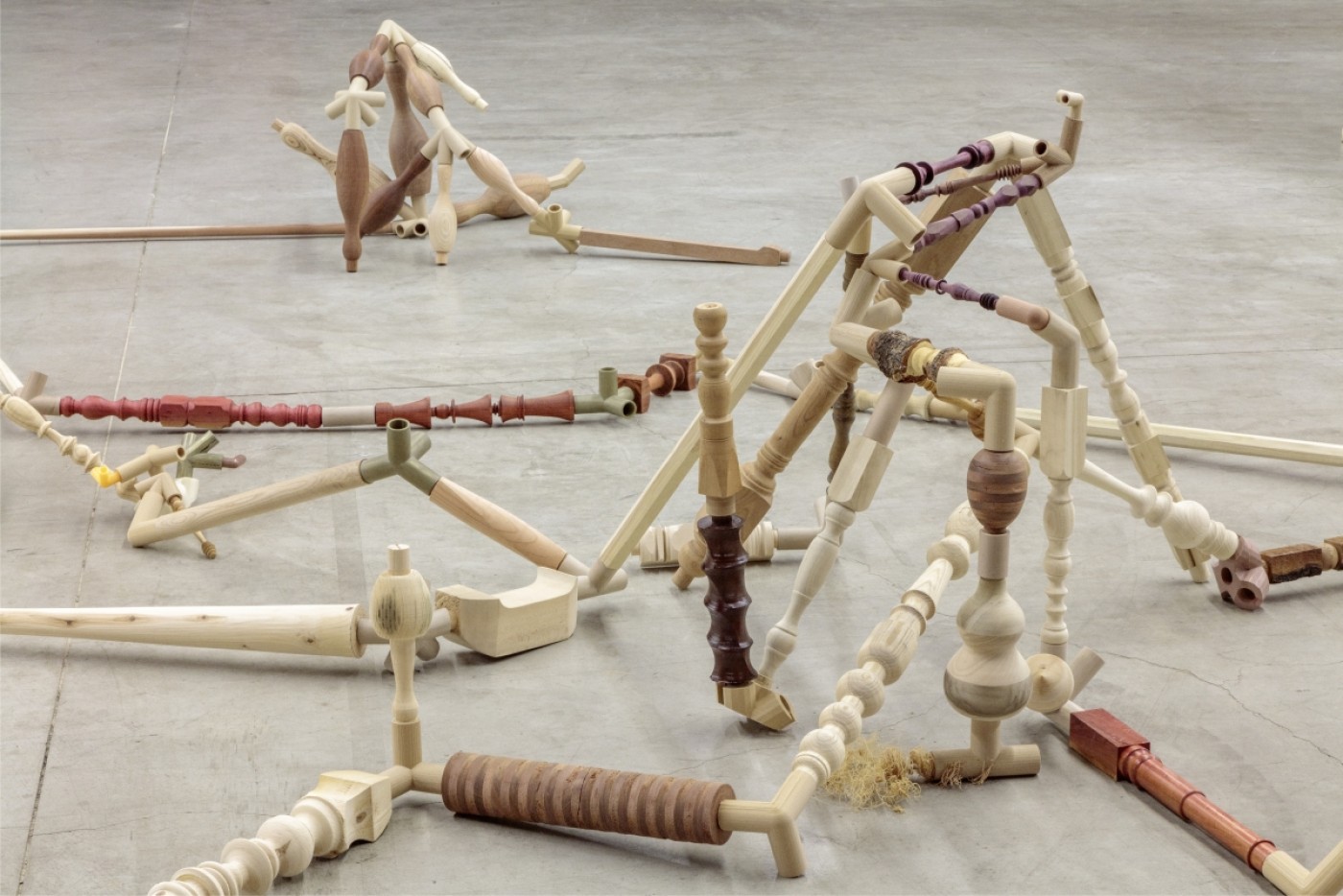Hong Kong-born, Los Angeles-based artist Shirley Tse has revealed an art exhibition featuring 3D printed parts at the 2019 Venice Biennale international art fair. Called Stakeholders the exhibition is Tse’s collaboration with the M+ museum of visual culture, and Hong Kong Arts Development Council.
The artwork has taken up residence in the Hong Kong Pavilion. Part outside courtyard, part indoor gallery the pavilion features two displays Playcourt and Negotiated Differences.

3D printing as a medium of artistic expression
Negotiated Differences, is a root-like sculpture that meanders through all the rooms of Hong Kong Pavilion’s gallery. A continuous object, this work is formed of different weights and lengths of wood, and are joined together by 3D printed parts.
In line with the overarching theme of 2019’s Biennale – “May You Live in Interesting Times” – the sculpture encourages viewers to think about the ways we relate to one another as stakeholders in societies which have been thrown off balance by the failure of consensus politics.
Negotiating the differences between art and 3D printing
To produce the sculpture Tse combined conventional lathing processes with modern 3D printing technology – neither of which she had used before. The lathed parts of the artwork consisted of everyday objects like balusters, baseball bats, bowling pins, and water pipes. By contrast he 3D printed joints were manufactured using polymer, copper and wood filament using designs of which are freely available on Creative Commons.
However, Tse found it difficult to merge the additive manufacturing process with her own creative process – a fact which she revealed in an interview with M+ Stories, the online storytelling platform of M+.
Describing how she creates her art she said, “When I start working on a piece, all I know is the materials and the concept, and perhaps a rough image. I don’t know what the final product will be. I don’t like to decide too many things ahead of time.”
Tse’s instinctive desire to create on the fly jared with the meticulousness of the 3D printing process.
“Printing one thing took more than ten hours, and I would be there watching over it… The machine sucks my soul. My humanity is being robbed by this machine,” she said.

The result of these issues was a group of objects riddled with errors and deformations. While this would be disaster for anyone producing industrial end use parts, it’s much less of a problem for an artist influenced by an improvisational ethos. Indeed, Tse deliberately decided to include irregular and broken parts in the final work, allowing visitors to the pavilion a window into her creative process.
3D printing at the Venice Biennale
Tse’s work is one of a number of 3D printed artworks that have made appearances at the Venice Biennale over the last few years. In 2016 MyMiniFactory’s Scan the World exhibited 3D printed sculptures exploring the destruction world heritage. In 2018, an even larger display was constructed for the the Croatian Pavilion. The Cloud Pergola was created using robotic 3D printing technology from Ai Build, a London-based company developing AI and Robotic technologies for 3D printing.
The 2019 Venice Biennale is now open and will run until Sunday 24 Nov 2019
Vote for your 3D Printing Innovation of the Year in the 2019 3D Printing Industry Awards.
Subscribe to the 3D Printing Industry newsletter for the latest news in additive manufacturing. You can also keep connected by following us on Twitter and liking us on Facebook. Looking for a career in additive manufacturing? Visit 3D Printing Jobsfor a selection of roles in the industry.
Featured image shows a section of Negotiated Differences. Photo via Joshua White



